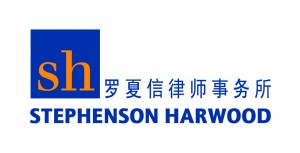9 June, 2017
The bulk carrier Ocean Victory had been chartered by owners on an amended Barecon 89 to demise charterers, who had in turn sub-chartered the vessel on time charter. There was a safe port warranty contained within each charterparty.
Sub-charterers ordered the vessel to discharge at Kashima, Japan. Before discharge was completed, swell caused by "long waves" endangered the vessel's mooring. When the master decided to leave the port, the vessel was subject to winds of up to Beaufort Scale 9 while exiting the port along the Kashima Fairway. The vessel had limited room to manoeuvre in the Fairway, foundered on the breakwater and eventually broke up and became a total loss.
The vessel had been subject to a rare combination of events: (a) swell generated from the "long waves" (a phenomenon affecting ports around the Pacific rim) and (b) very severe northerly gale force winds. This placed the vessel in a difficult situation: the swell made it potentially unsafe for the vessel to remain at berth, while the gale force winds made the Kashima Fairway (the only way in or out of the port) unsafe to navigate safely.
Kashima is a modern port. It is one of the largest in Japan and has a good safety record. While it is sometimes exposed to swell from "long waves" and while severe northerly winds could affect the navigability of the Fairway, this was the only time such an incident (involving both elements) had occurred in the port's 35 year history.
Owners and demise charterers were co-assureds under the vessel's hull and machinery policy and claimed accordingly. Hull underwriters paid the claim under the policy and became assignees of owners' and demise charterers' rights. On that basis, they advanced claims against sub-charterers for breach of the safe port warranty contained in the time charter. Underwriters' claim totalled USD137.8m.
At first instance, it was held that the port was unsafe. On appeal to the Court of Appeal that judgment was reversed. Underwriters appealed to the Supreme Court.
Held (Supreme Court):
The appeal was dismissed. There was no breach of the safe port warranty: Kashima was a safe port. The relevant event was the combination of the long waves and high winds, not the individual constituents. The test was not foreseeability but whether the event was an abnormal occurrence. The relevant event was an abnormal occurrence: no vessel had ever suffered such an event in the port's history and there was evidence that the storm had developed rapidly and was particularly severe.
If there had been a breach of the safe port warranty, sub-charterers could not limit their liability to insurers. Article 2(1)(a) of the 1976 Convention permitting limitation for liability "occurring on board or in direct connexion with the operation of the ship" did not include loss of or damage to the ship itself. The vessel cannot be both the perpetrator and the victim of the damage.
If there had been a breach of the safe port warranty, insurers could not bring a claim, pursuant to their subrogated rights, down the charter line against sub-charterers for breach of the safe port undertaking.
Clause 12 of Barecon 89 provided a comprehensive code for dealing with loss or damage to the vessel which provided that there should be an insurance funded outcome. There was therefore no liability of the bareboat charterer to the owner to which insurers could be subrogated.
(Gard Marine and Energy v China National Chartering, The "OCEAN VICTORY" [2017] UKSC 35)
For further information, please contact:
Andrew Rigden Green , Partner, Stephenson Harwood
andrew.rigdengreen@shlegal.com





